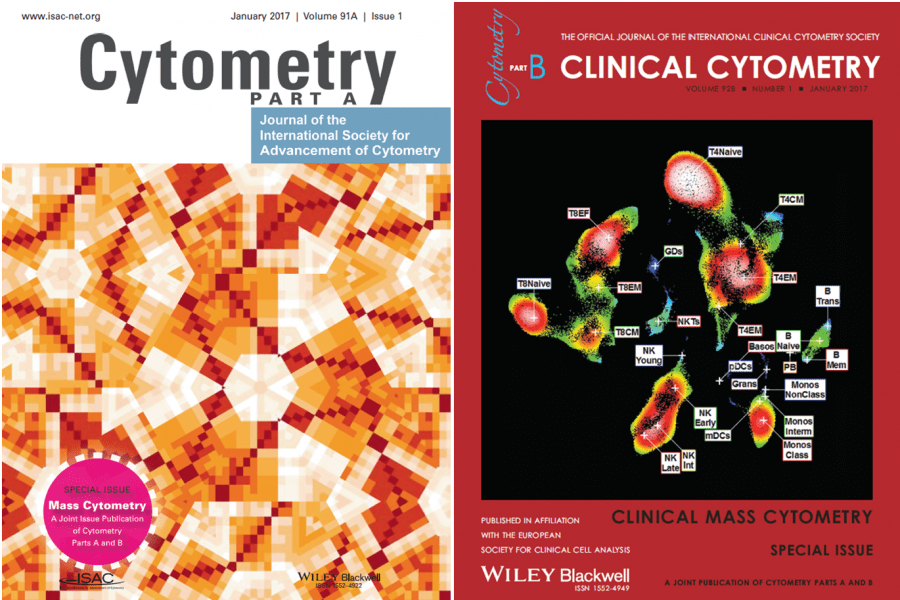Cytometry Part A and Cytometry Part B: Clinical Cytometry combine forces to publish the first Joint Special Issue on Mass Cytometry (MC) guest edited by Antonio Cosma at the CEA – Université Paris Sud 11 – INSERM U1184, and Garry Nolan and Brice Gaudilliere at Stanford Medicine. Quentin Braca at Stanford Medicine joins this group as a guest editor in Cytometry Part B: Clinical Cytometry Special Issue.
Mass Cytometry, or CyTOF (Fluidigm), is a relatively new field first described by Dmitry Bandura and colleagues in 2009. In conventional flow cytometry (FCM) the cells of interest are labeled with fluorescent antibodies. Readout is by a laser- or impedance-based flow cytometer. MC replaces fluorochromes on antibodies with heavy metal ion tags, and readout is by time-of-flight mass spectrometry. This revolutionary technology pushes the limits of cytometry by boosting the number of measurable markers to a theoretical 100 parameters. Alone and in conjunction with conventional FCM, MC is gaining momentum with basic and clinical biomedical researchers around the world. The aim of this Special issue is to bring our readers up to date with the latest progress and outline future directions that will bring MC to full maturity.
Read more in the Cytometry Part A editorial by Antonio Cosma, Garry Nolan and Brice Gaudilliere “Mass Cytometry: the time to settle down”, and the Cytometry Part B editorial by Quentin Baca, Antonio Cosma, Garry Nolan and Brice Gaudilliere “The road ahead: Implementing mass cytometry in clinical studies, one cell at a time” to embrace the full scope of this Special Issue. The Cytometry Part A Special Issue includes one OMIP and seven articles on new tools in MC. While the Cytometry Part B Special Issue includes one review and six articles that focus on clinical aspects of MC applications.

















